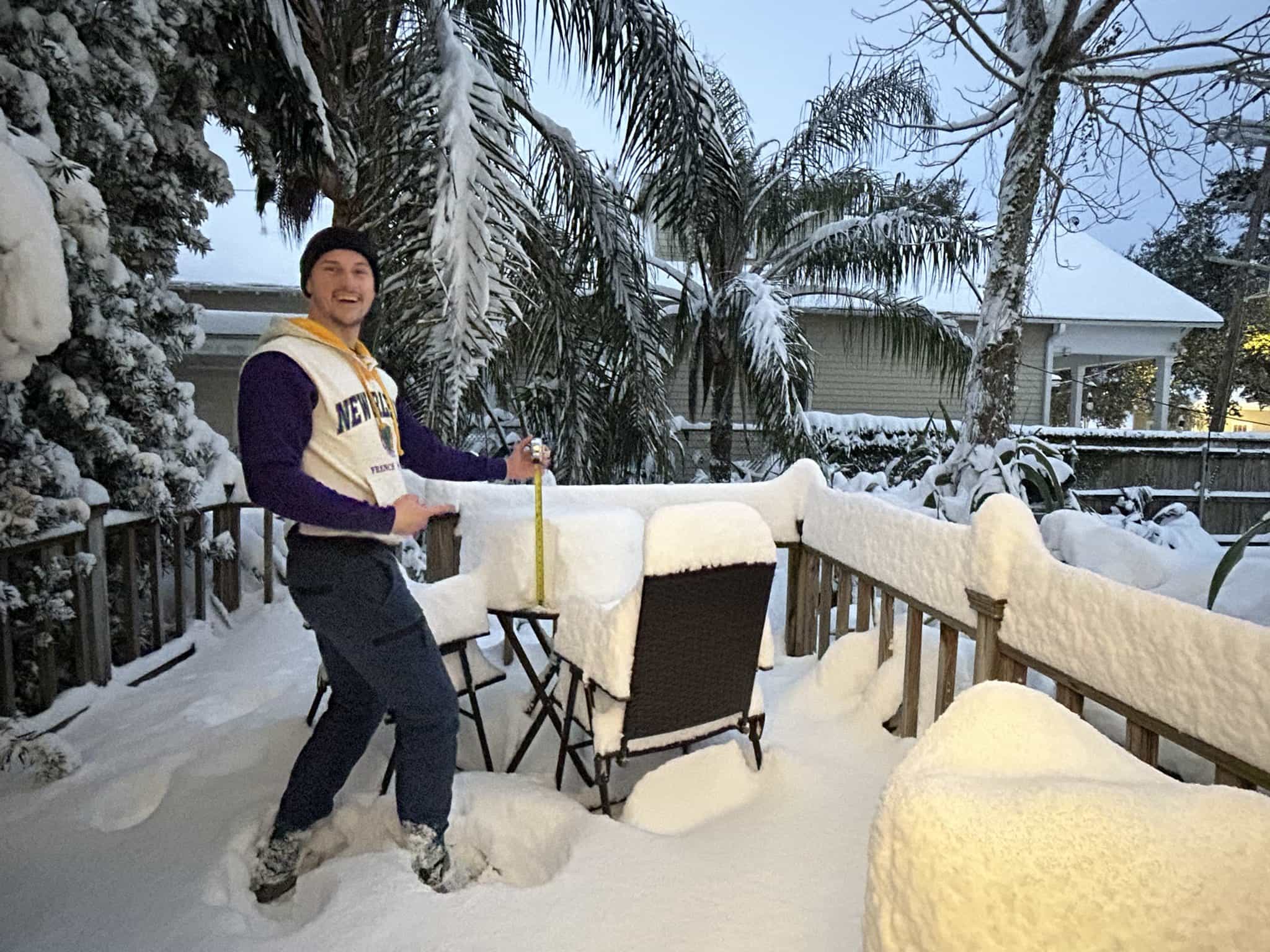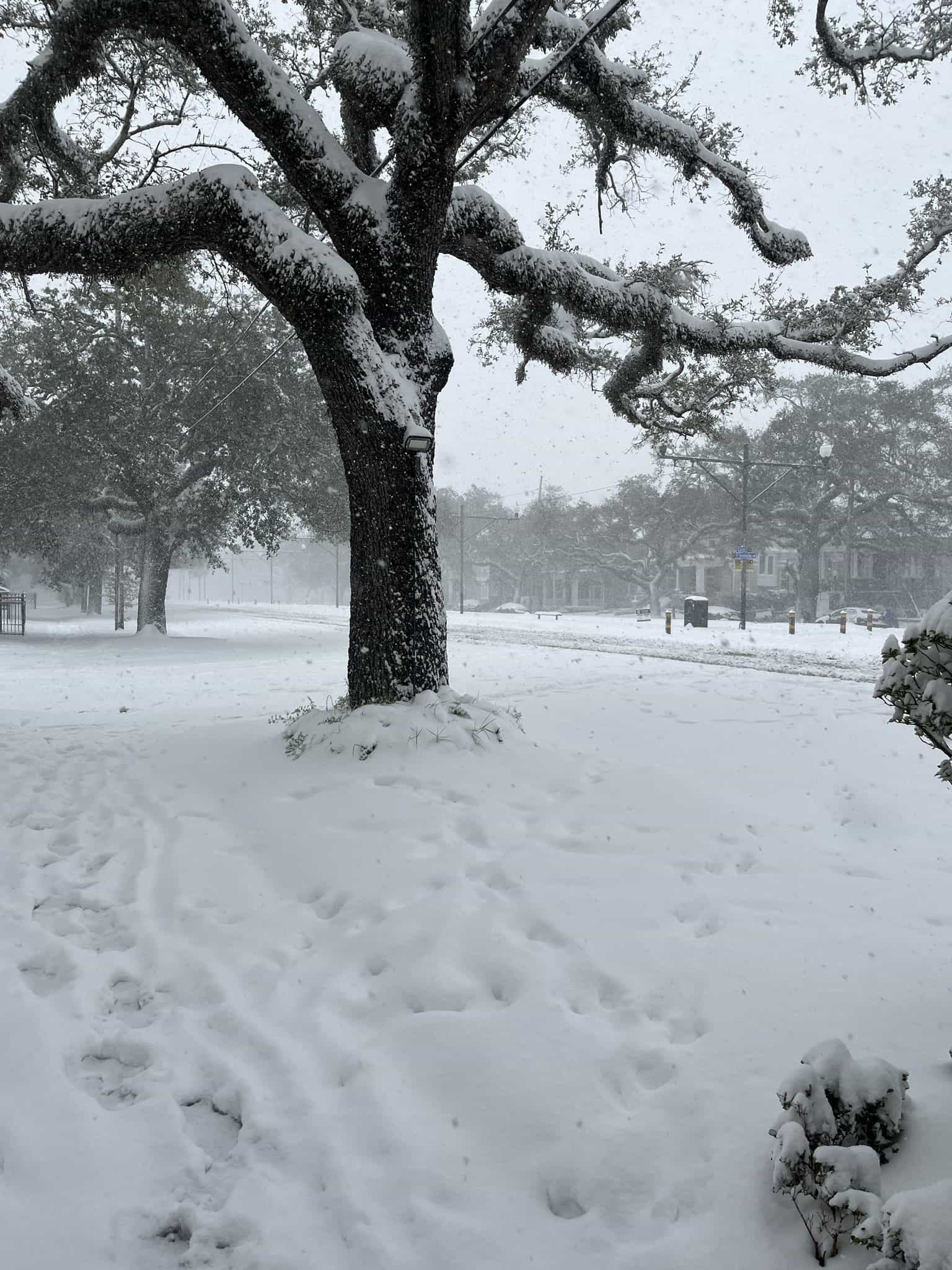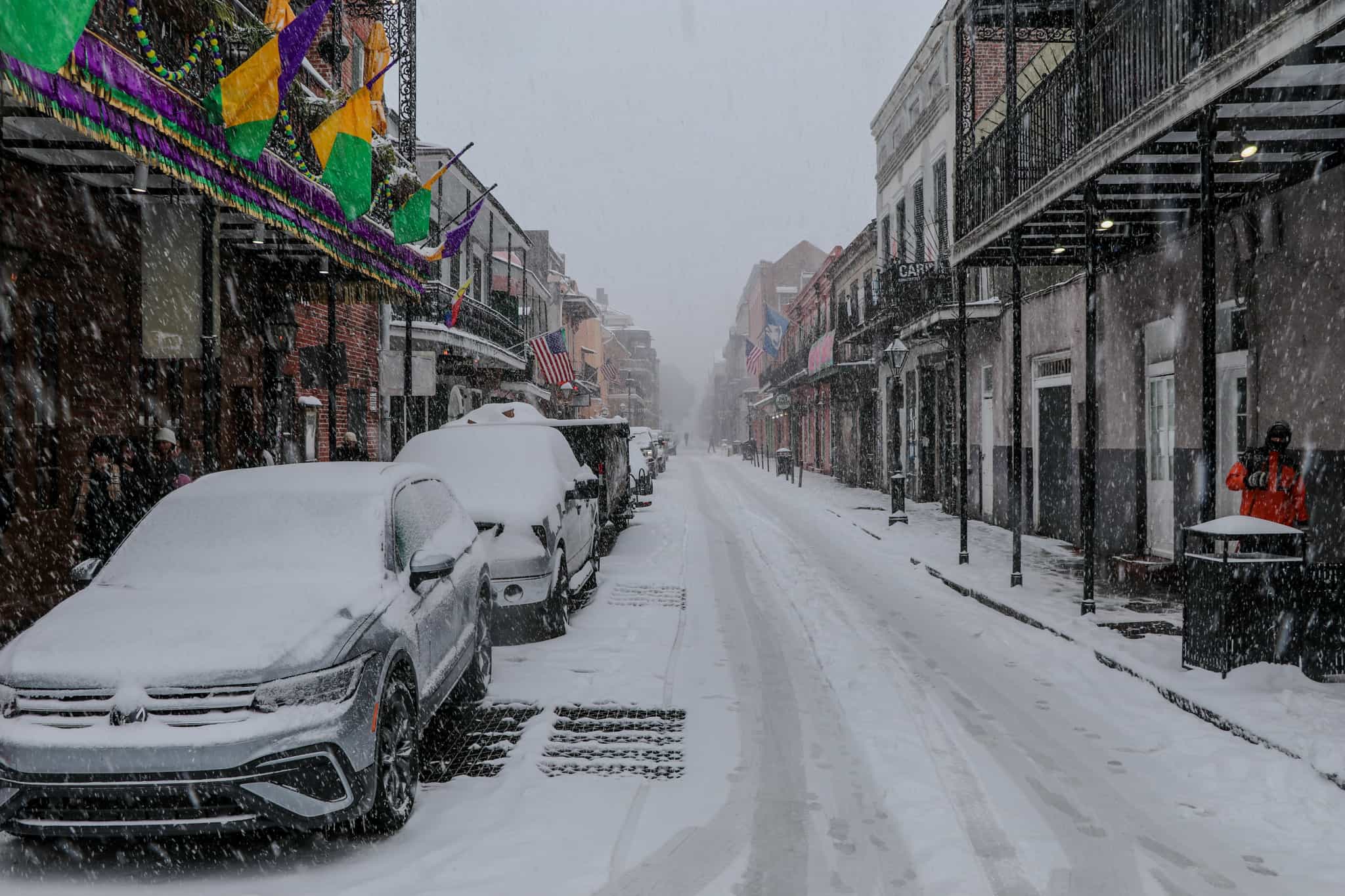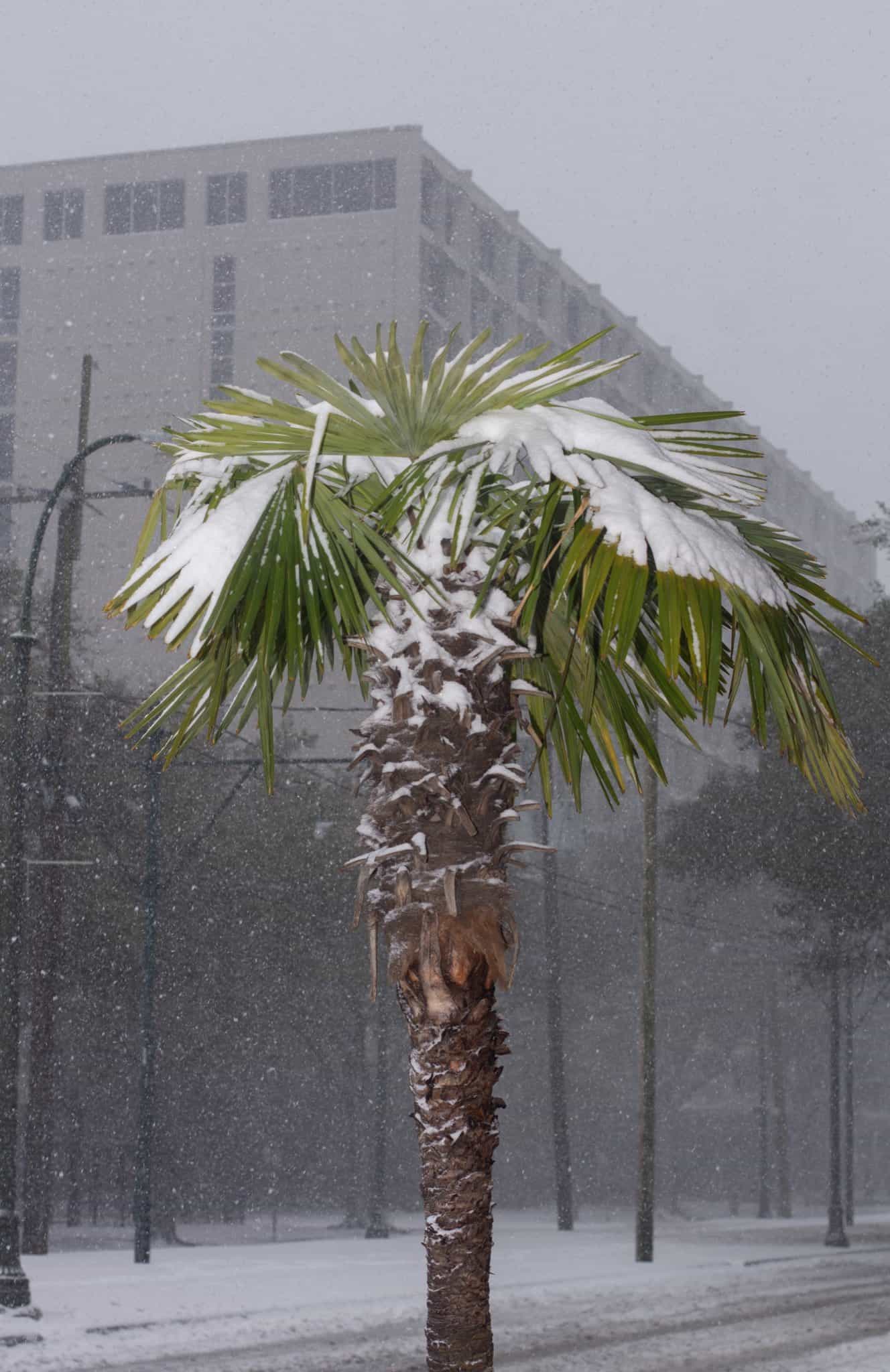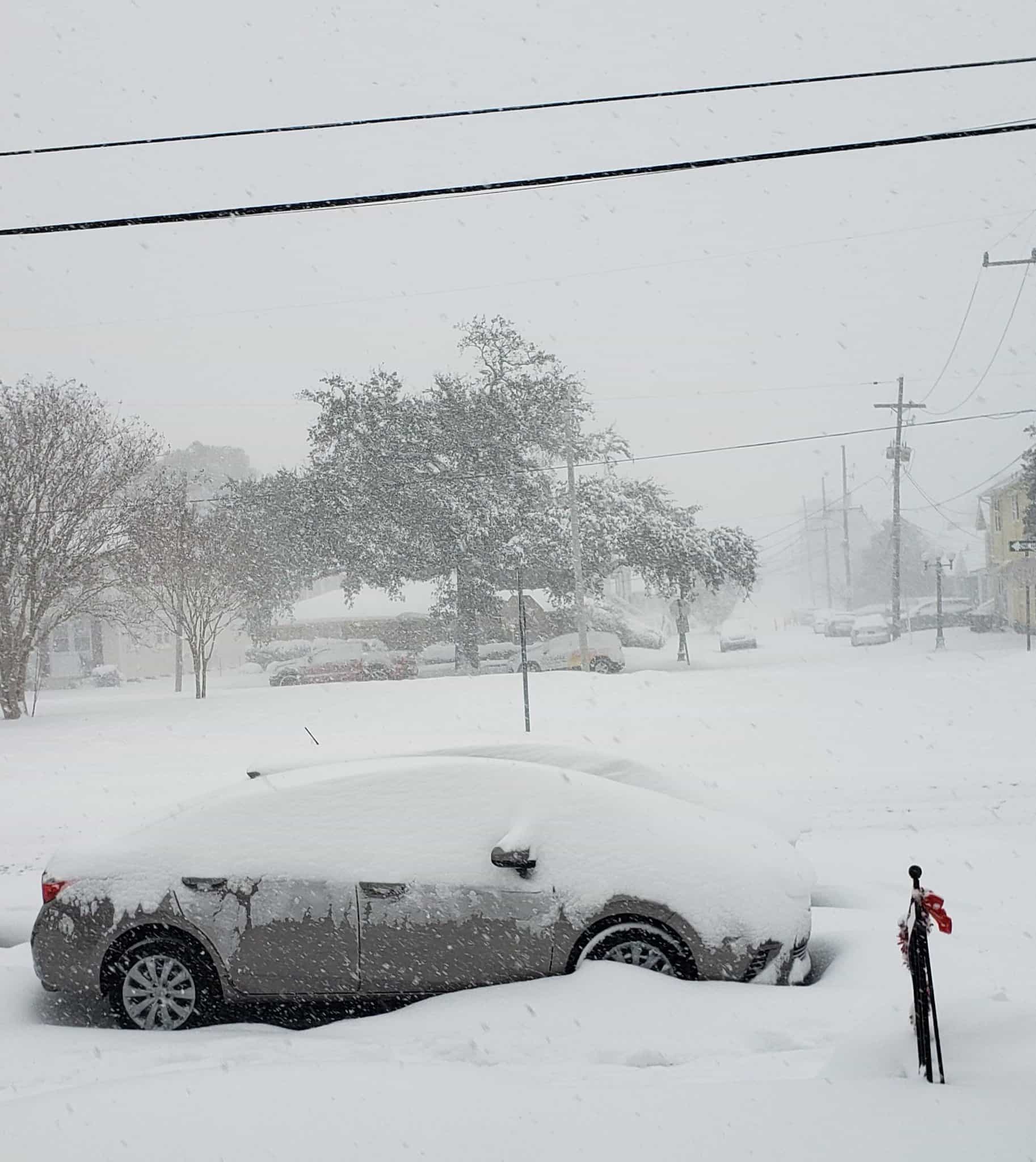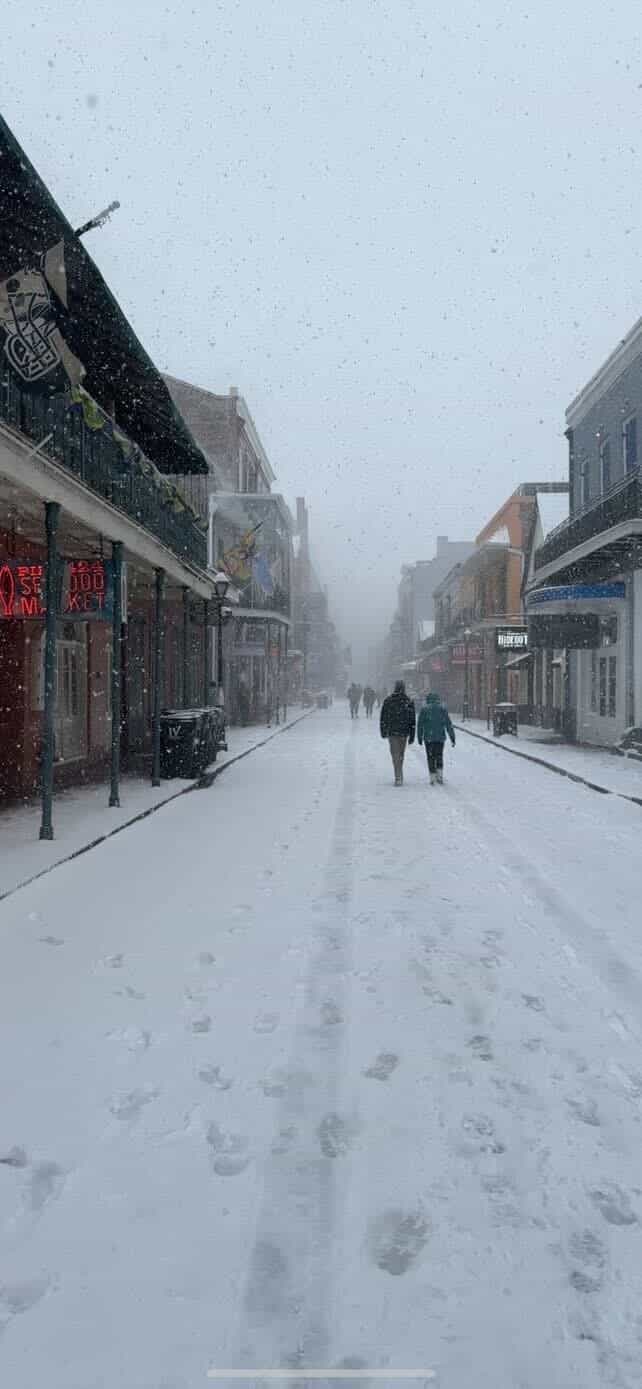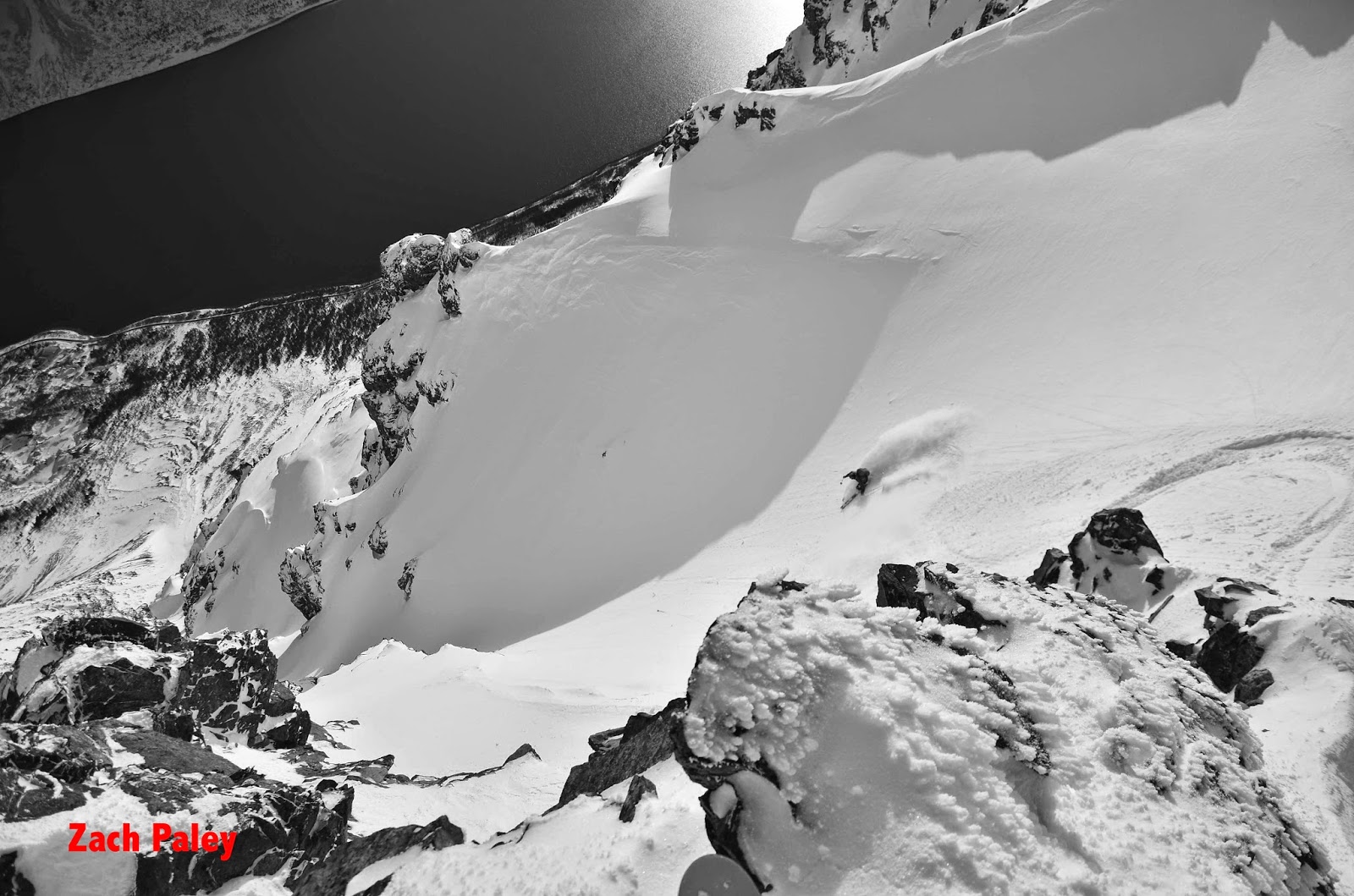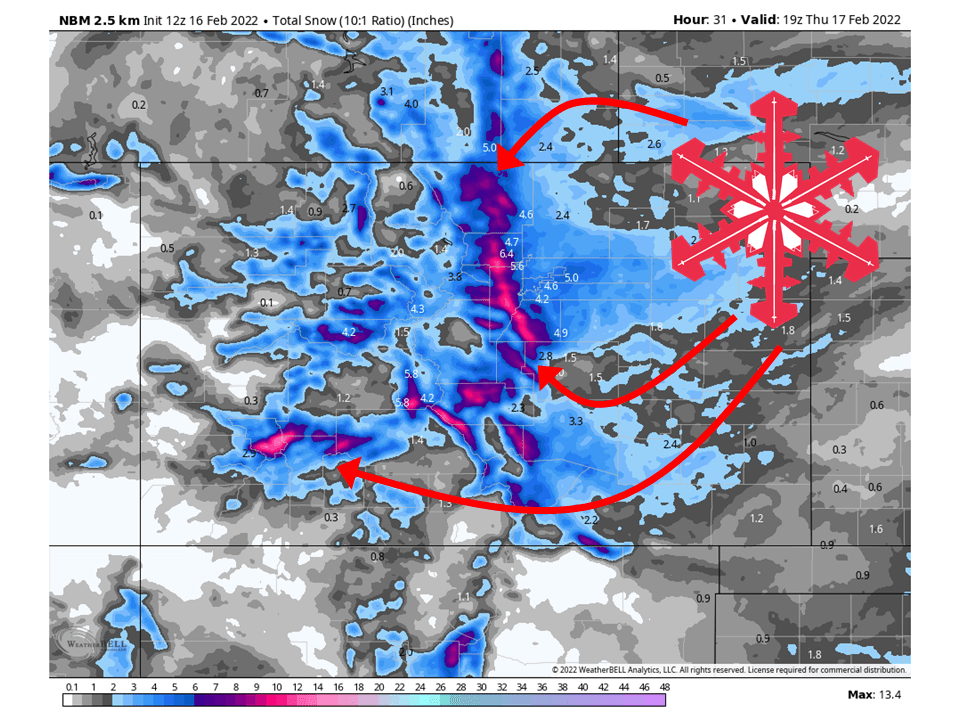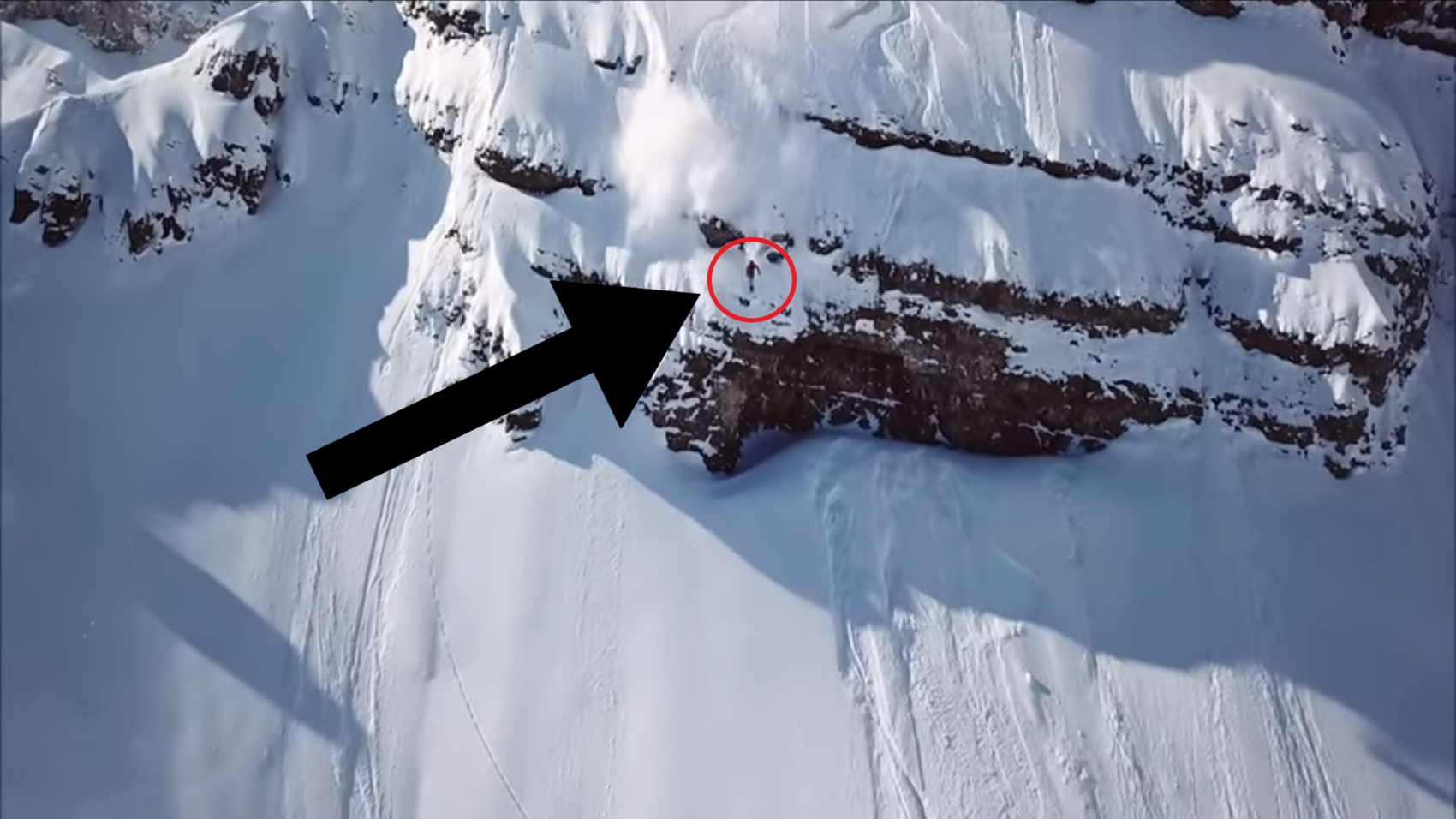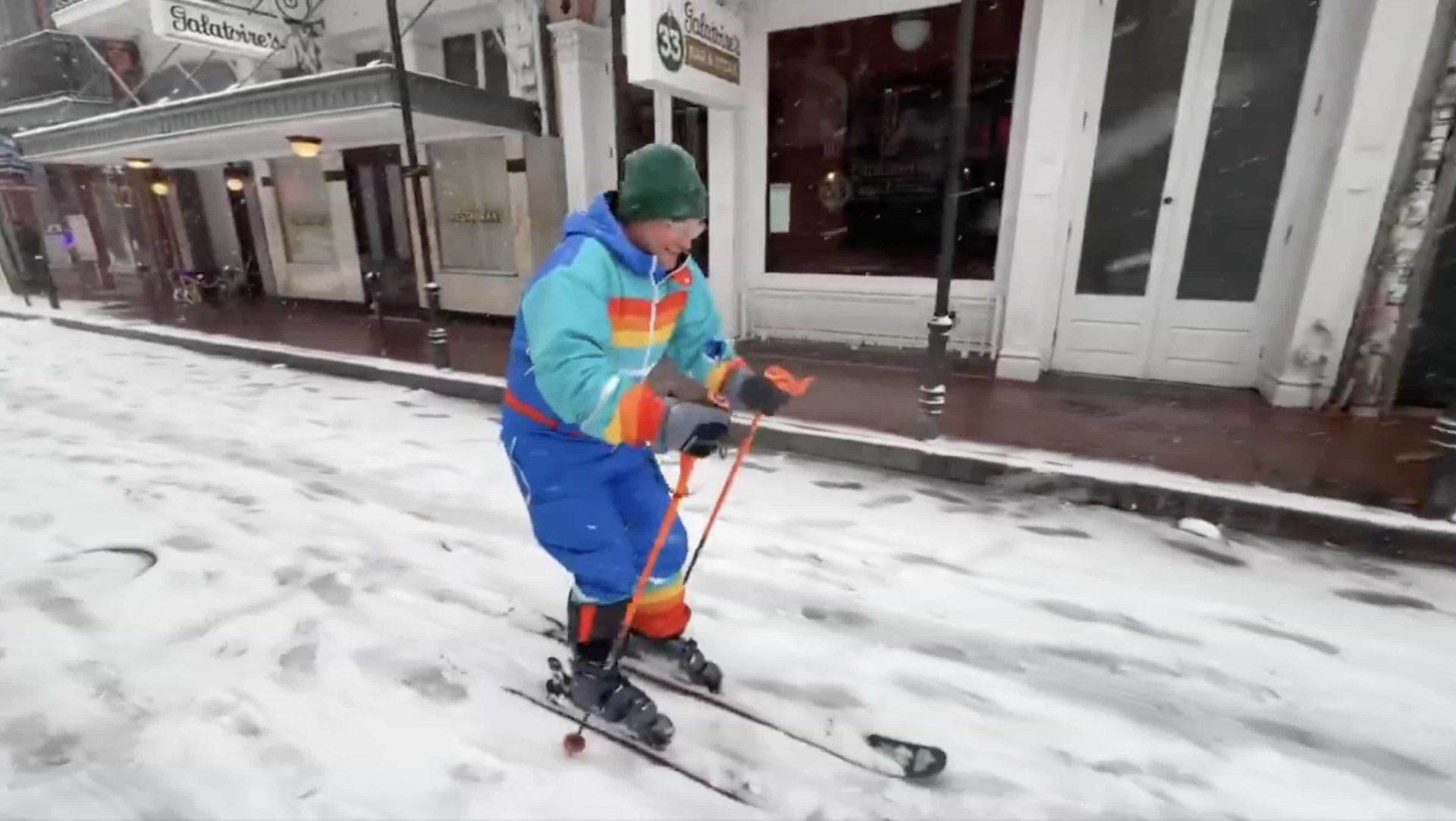
New Orleans and the Gulf Coast experienced unprecedented snow on Tuesday, January 21. In some areas, accumulations reached eight inches, shattering the previous record of 2.7 inches set in 1963.
According to Weather Nation, New Orleans has seen more snow this year than Anchorage, Alaska.
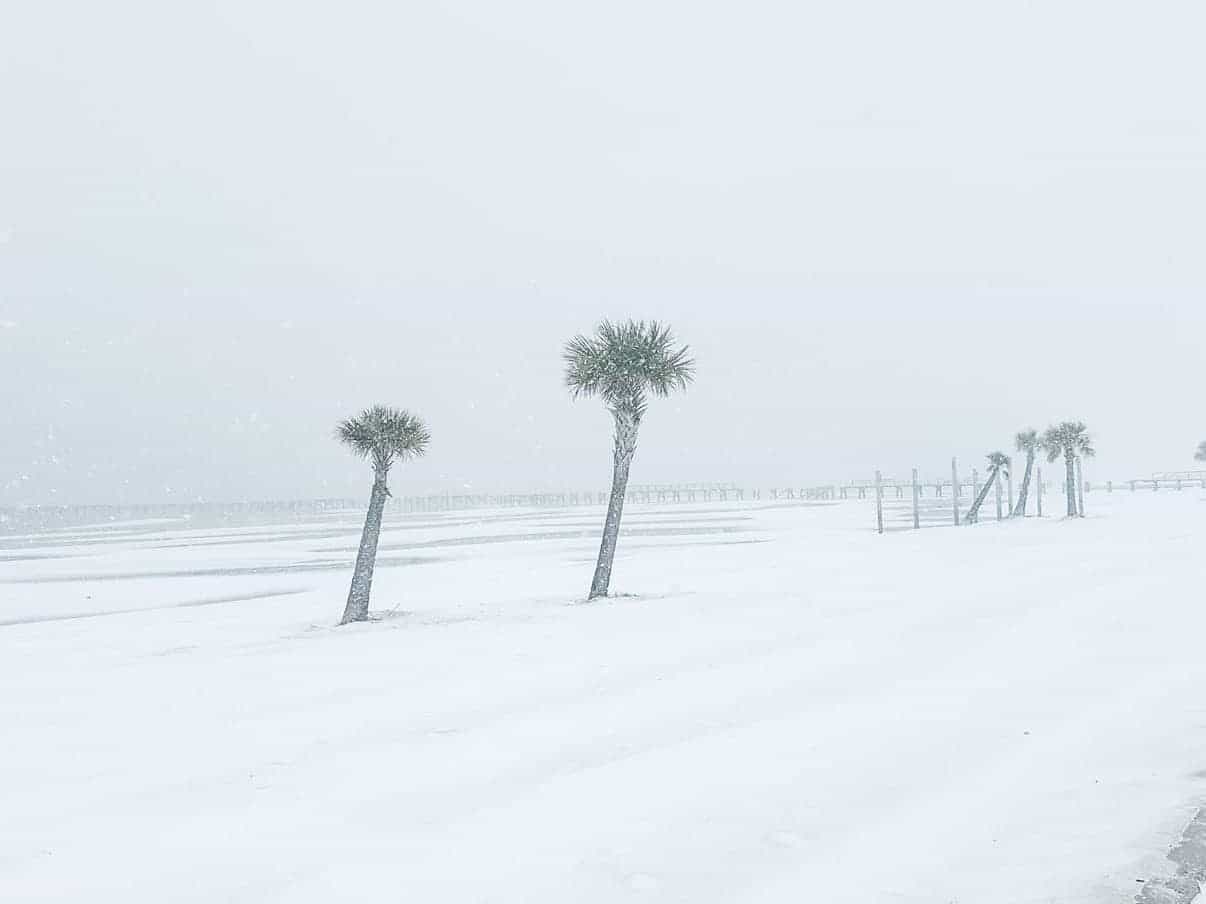
The storm, part of a larger system affecting the Gulf Coast, brought rare winter conditions to several states:
– Louisiana: New Orleans saw the highest totals, with 8 inches in some areas.
– Mississippi: Jackson recorded 6 inches of snow.
– Alabama: Mobile received 4 inches, while Birmingham saw 5 inches.
– Florida: Pensacola measured 2 inches of snow, a rarity for the Sunshine State.
I’m still in disbelief this happened. Here it is. Timelapse of historic New Orleans snow storm. Snow got up to 12 inches on my snowboard in the French Quarter. pic.twitter.com/M9byQeZJGL
— Payton Malone WWL-TV (@paytonmalonewx) January 22, 2025
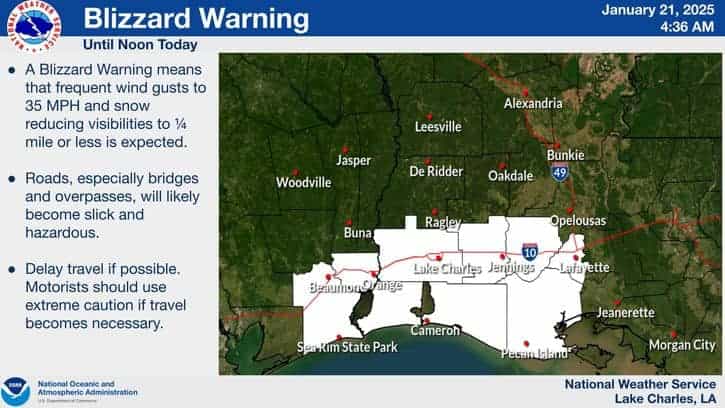
The snowfall paralyzed New Orleans, closing major highways and the Louis Armstrong International Airport. Officials declared a state of emergency and urged residents to stay home due to treacherous road conditions.
Despite the challenges, many New Orleanians embraced the rare event. Social media is filled with images of snowball fights in the French Quarter and makeshift sleds on Bourbon Street.
2 inches of snow on Bourbon Street and we got skis out. Northerners look away pic.twitter.com/PViW9ilnLb
— FOX 8 New Orleans (@FOX8NOLA) January 21, 2025
Officials warn of potential power outages and burst pipes as temperatures remain below freezing.
A rare combination of meteorological factors caused the historic snowfall. A surge of Arctic air plunged southward, bringing frigid temperatures to the region. This cold air mass collided with a low-pressure system that pulled significant moisture from the Gulf of Mexico. The interaction between these two systems created the perfect conditions for heavy snowfall in areas that typically experience mild winters. The trajectory resembled a tropical storm, carving an icy path from Texas to Georgia and the Carolinas. This unusual setup allowed snow-to-water ratios to be higher than usual, resulting in snowfall totals exceeding many forecast models.
Photos
